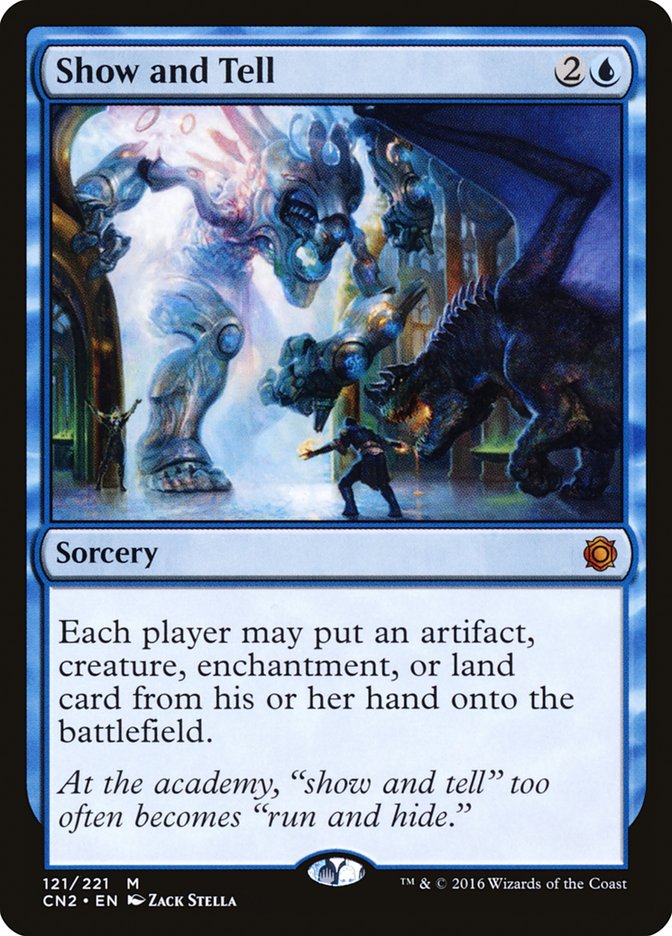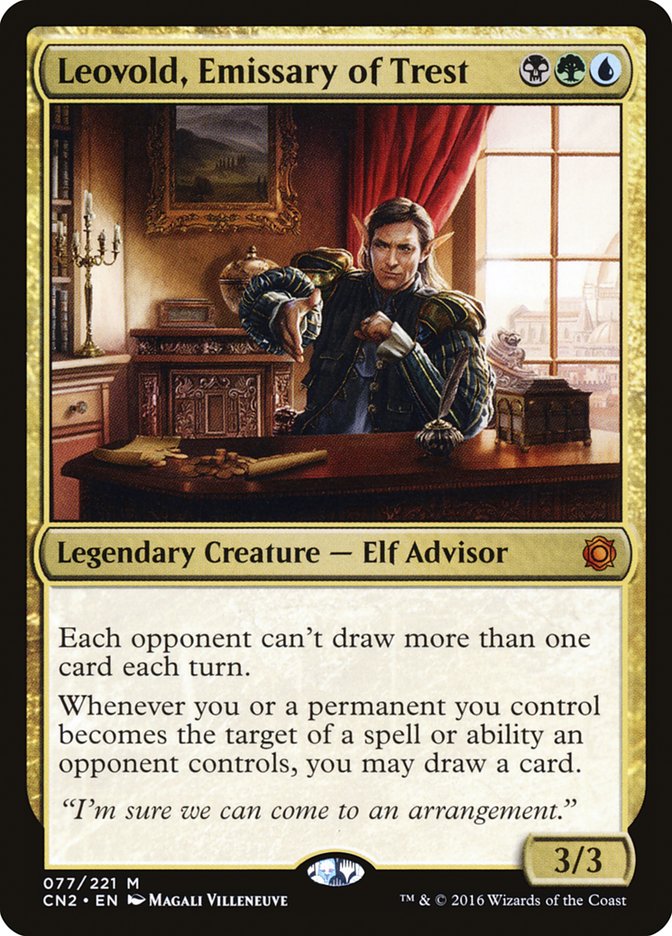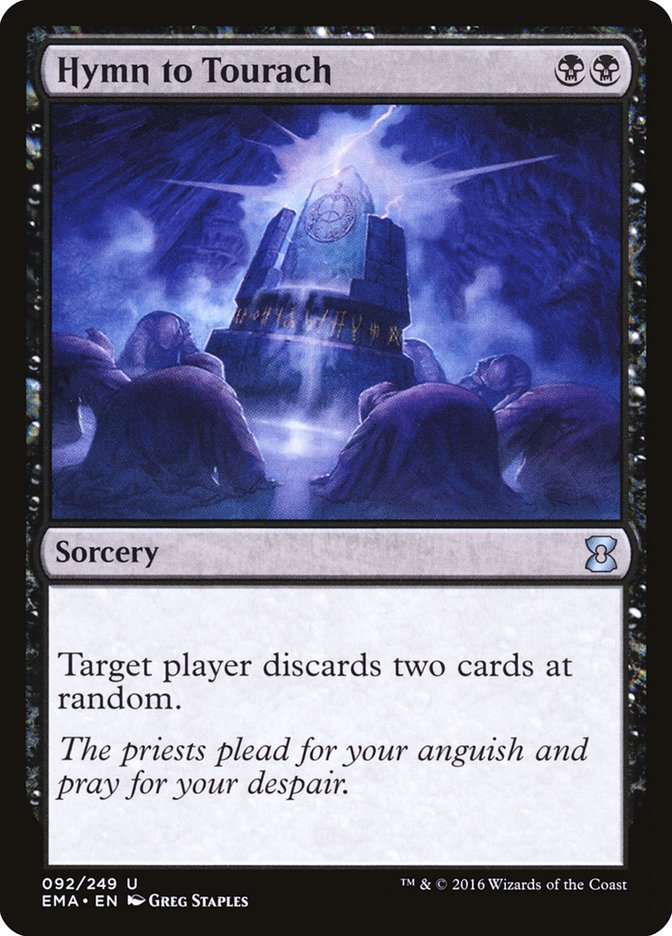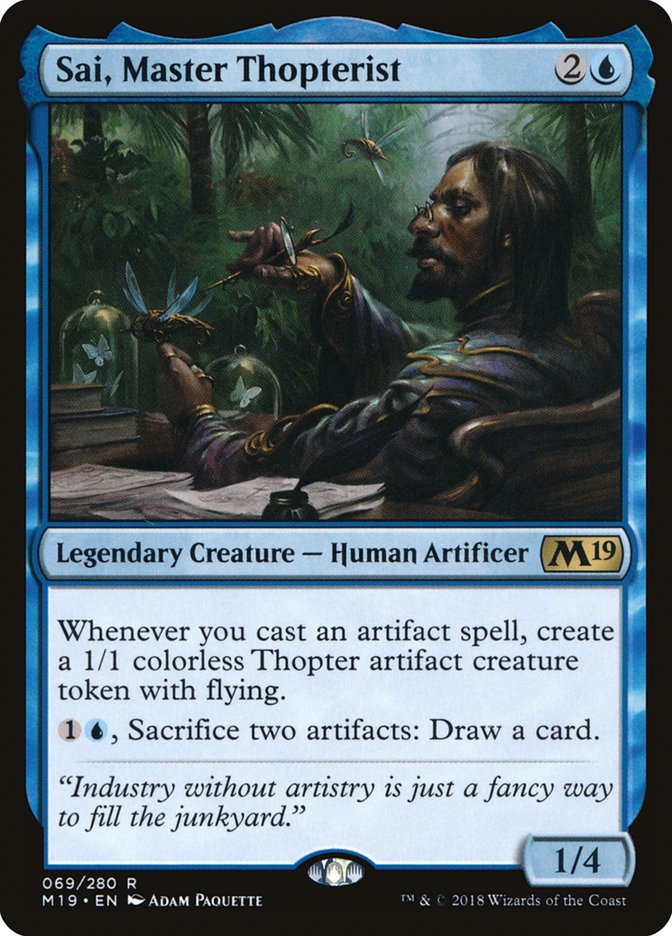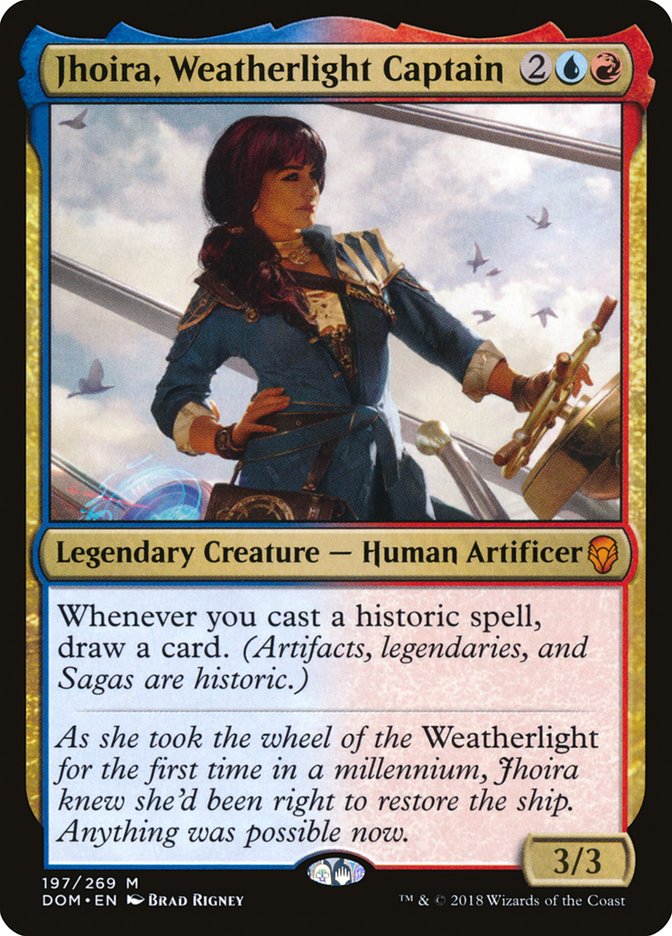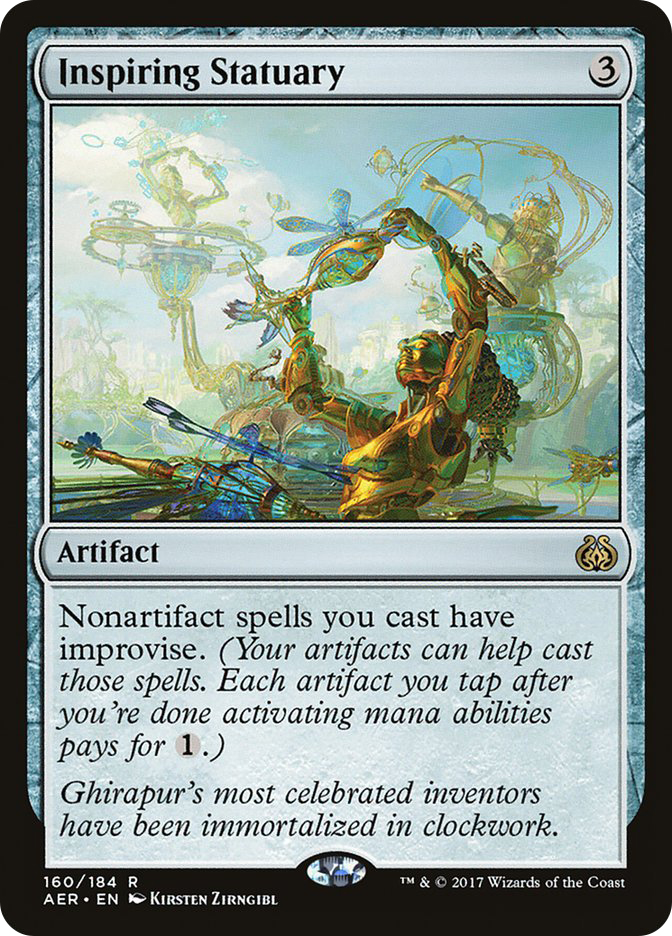At this point, you already know the outcome of Pro Tour 25th Anniversary. I
guess I do too, but I didn’t as I sat down in my hotel room in Minneapolis
Thursday afternoon before the Pro Tour watching the Silver Showcase Draft
and reminiscing about my time preparing for this Pro Tour. I’ve never
worked harder preparing for a tournament in my entire life, and I hoped all
that preparation would be worth it. That’s because I was at 49 Pro Points
for the season which meant a good finish got me and my teammate, Brian
Braun-Duin, to Worlds. Genesis was also in fifth place in the Team Series,
and a good finish could get us to Team Worlds.
Simply put, the stakes had never been higher for me and my team.
Since Pro Tour 25th Anniversary was so important, Genesis decided to up the
ante by preparing harder than we ever did before. We joined forces with
Team Ultimate Guard and began preparation for the event a month out.
That’s right. We tested for four weeks and in person for much of it. Crazy
in 2018, I know.
William Jensen and Owen Turtenwald live four hours away from where Brian
and I live, but very close to Seth Manfield, so that seemed like the
perfect location to meet up to begin preparation. Three formats weren’t
going to be easy to break, but we had the time and resources to get the job
done.
The merger of Genesis and Ultimate Guard was exciting. Both teams work
extremely hard to give themselves the best chance for success when playing
professional Magic and very often do both teams choose the same decks for
events. So much so, in fact, that we’ve joked that we already know what the
other team is playing at events and we’re often correct. We think in
similar ways, work in similar ways, and now prepare in similar ways.
Testing for team events was something new to me. I’ve played Team
Constructed Grand Prix before, but nothing close to an event this large in
magnitude. Usually you just work on your deck/format, answer questions
asked by teammates about theirs, but for the most part don’t get too
involved in their business unless asked to. This time around, I assumed we
would want to all know each other’s decks to have the best chances. It’s
possible that something might go wrong and attentions scattered, but
theoretically we would be able to divide our time between the formats.
Things were going to be complicated, though, as Wizards of the Coast
decided to ban Deathrite Shaman and Gitaxian Probe in Legacy, ultimately
shaking the format up. As a result, many of us assumed the best deck would
end up being Sneak and Show. After all, it was one of the best strategies
before Deathrite Shaman moved into the format. Brian Braun-Duin wasn’t
willing to give up on Four-Color Leovold and was busy working on the Grixis
variant that also leaned on Hymn to Tourach.
Those two decks weren’t all there was going to be though. We knew we had to
do our due diligence by practicing with every deck in the format, not just
to make sure we know how to beat every strategy, but potentially finding
one worthy of playing ourselves.
Modern was initially easy. We decided to learn everything we could about
Ironworks, as that was the primary reason why meeting in person would be so
beneficial. We needed our players to practice it in person as opposed to
online as it’s an excruciatingly slow deck to play on Magic Online. Many of
us worked on Ironworks and to great early success. A few times here or
there, five players huddled around a game arguing what’s actually legal to
do, but for the most part we were getting it.
In Standard, it was just Owen and I on an island bashing deck after deck
against R/B Aggro. Game after game we found the deck just didn’t have any
bad matchups. There were a few we considered slightly unfavorable, but as
we kept playing games, we slowly realized one of us was an unmovable object
while the other was an unstoppable force.
Luckily for me, one day I was up 26-24 in matches played, which I made sure
everyone in the house was aware of!
As the days went on, it seemed that Sneak and Show in Legacy wasn’t putting
up the numbers we would have liked, but Grixis Control was. Many of the
players in the house started to like the deck, but Owen had to take some
time out of his day to find out for himself as he was not follower of
Tourach. He grabbed Temur Delver and told Brian Braun-Duin that he was
challenging him. We already knew Temur Delver was bad, so I believe Owen
was making some sort of a power play. He wanted Grixis Control to be bad: I
knew it, he knew it, and BBD knew it.
BBD 9-1’d him.
After that, the only thing heard in the house was Owen singing his praises
to Tourach and hoping all our opponents would feel his wrath by getting
their best cards taken from them.
Modern started to get bogged down like it always does. We began to run into
issues with Ironworks against sideboard hate like Stony Silence, Surgical
Extraction out of specific decks, and just a variety of things we thought
we would be able to solve. Surely given this much lead time we could fix
this, right?
Wrong. We even started testing Sai, Master Thopterist in the sideboard, as
we started really liking the card in Standard. It was okay in the sideboard
of Ironworks, but casting it against Stony Silence was impossible. Changing
the manabase was considered, but at that point I went back over to my
Standard island, as Genesis member Martin Muller had a brew for us to try.
Creatures (13)
Lands (13)
Spells (34)

Now this ain’t your normal version of Mono-Blue Paradoxical Outcome, as
it’s way more dedicated to the storm combo thanks to Jhoria, Weatherlight
Captain. The idea is that Mono-Blue Paradoxical Outcome has to grind its
way up to a large density of lands and permanents before it can get above
50 life while splashing red allows you to do it as early as turn 5 (well,
turn 4 if you’re really lucky, but that only happened a few times in
testing). Adding more legendary creatures to the deck also allows you to
play four copies of Mox Amber, one of the best cards in the deck.
U/R Paradoxical Outcome could do some really stupid things with Jhoria,
Weatherlight Captain and Inspiring Statuary on the battlefield. Card after
card gets drawn until Paradoxical Outcome gets cast, sometimes after all
your lands have been tapped. Three Ornithopters and a Mox Amber turned into
four fresh cards drawn and another Paradoxical Outcome means the same
thing. Sometimes this loop could draw an entire deck, so we had to cast
Baral’s Expertise on two Ornithopters and Jhoria herself to make sure we
didn’t deck ourselves, and Aetherflux Reservoir would enter the battlefield
after something like twenty spells being cast.
Unfortunately, we did very well with U/R Paradoxical Outcome in the early
days of working on it. We were smashing everything and kept trying
different sideboard plans, but eventually we learned how to play against
the deck and realized it had difficulty with R/B Aggro. Since we expected
that to be the best deck, we ultimately discarded U/R Paradoxical Outcome,
but only after 400-500 games. We went all-in on the deck and busted, which
left us with only a few days before the event to perfect R/B Aggro as we
didn’t have anything else that seemed reasonable. Additionally, the data
pointed to R/B Aggro being the best, and since it was last time at Pro Tour Dominaria, it didn’t seem like we could go wrong playing it.
We did discuss the chances that we just learned how to beat U/R Paradoxical
Outcome, thus leaving a great deck on the table, but that’s never a great
path to go down. Assuming your opponents at the Pro Tour will not know how
to play against your brew is often just a subjective reason to play the fun
deck. Maybe the data was being harsh on the deck, but that wasn’t enough to
all of a sudden think the deck was tournament-worthy.
Luckily, our Legacy guys were locked in on Grixis Control as it simply had
the highest win percentages, but the kicker was the team also really
enjoyed the deck over the other options. The most enjoyable deck being the
best deck? I’ll take that!
Creatures (10)
Planeswalkers (3)
Lands (19)
Spells (28)

Ironworks, in the end, was a “bust.” I put bust in quotations because I
wasn’t really sure if the deck wasn’t where we wanted to be or if it was
just that we tested too hard against the deck. When perfect information
exists in testing against great players, it’s difficult to not beat the
deck you want to succeed. Maybe we had too much hate, or maybe we always
knew how to play against the deck, but in the end, it just wasn’t where we
wanted to be.
Fortunately, we had a backup!
Huey suggested trying U/R Gifts Storm even though it wasn’t that popular
and historically hasn’t been that good of a choice. Surprisingly, the
release of Damping Sphere made the choice better as it gave players a false
hope at beating the matchup. When Storm is prepared for Damping Sphere, it
isn’t really that difficult to beat. Huey, Martin, Brian, Finkel, and Seth
worked hard on a list we were all really excited about given the predicted
metagame.
Creatures (6)
Lands (14)
Spells (40)
- 1 Mountain
- 2 Island
- 4 Sleight of Hand
- 4 Serum Visions
- 4 Gifts Ungiven
- 4 Desperate Ritual
- 4 Opt
- 2 Remand
- 1 Repeal
- 2 Grapeshot
- 4 Manamorphose
- 2 Pyromancer Ascension
- 4 Pyretic Ritual
- 2 Past in Flames
Sideboard

We figured that Humans must be the most popular deck, and even though it’s
not the best matchup, we worked hard on a great sideboard plan for turning
the deck into a combo/control deck using removal spells to keep the
battlefield clear. Grim Lavamancer has historically been amazing against
creature decks, which is especially true when they don’t see it coming.
VS Humans
Out (On the Draw):

In (On the Draw):

Out (On the Play):

In (On the Play):

Back to Standard!
I really don’t like playing the most popular deck at Pro Tours. Sometimes
it’s great, sometimes it’s fine, but R/B Aggro just seemed like the kind of
deck players could exploit. The problem is we didn’t find anyway for that
to be true. It just feels like the 51% deck since all the good matchups are
gone. The deck won’t have any great matchups in the room, but maybe might
have a few bad ones if people break it. At the same time, Paradoxical
Outcome hype really throws a wrench into things as that deck is horrible
against R/B Aggro if you know how to play against it. It’s unknown if
players knew that and decided to play the deck, as it has a good matchup
against everything that’s not R/B Aggro and Mono-Green Aggro. It’s even
great against Mono-Red Aggro as they can’t kill Sai, Master Thopterist,
which is something R/B Aggro can do with ease.
People might be afraid of Paradoxical Outcome, ignore it, or even play it.
Trying to guess the numbers kept me up at night, but we ran out of time. We
just had to sleeve up what we thought would give us the best chance and
this was the final product.
Creatures (22)
- 1 Pia Nalaar
- 4 Bomat Courier
- 4 Scrapheap Scrounger
- 2 Kari Zev, Skyship Raider
- 2 Glorybringer
- 3 Hazoret the Fervent
- 2 Soul-Scar Mage
- 4 Goblin Chainwhirler
Planeswalkers (3)
Lands (11)
Spells (24)

We wanted the fourth Chandra, Torch of Defiance in the sideboard as it’s
the best card against Grixis Midrange, a deck we thought would be the third
most popular deck right behind Mono-Green Aggro and R/B Aggro. We also
assumed control will be too risky of a choice, as U/W Control doesn’t even
have a great R/B Aggro matchup, and Esper Control struggles with anything
that’s not R/B Aggro and U/W Control. Additionally, we really hated
Doomfall and think that card should never be in R/B Aggro. I will say that
I’m scared of playing against U/W Control and them casting Sorcerous
Spyglass on a card I play four copies of, but there’s not much I could do
about that. I just had to bank off Grixis Midrange being more popular than
other control decks.
VS R/B Aggro
Out:

In:

Sometimes I take Heart of Kiran out of the deck on the draw, but the
options to replace it aren’t great. Other players seem to keep Chandra,
Torch of Defiance in over Heart of Kiran or Unlicensed Disintegration, but
I’m unsure about that. Usually I’ll just keep in more removal on the play
and can see having one Planeswalker on the play, but the problem is
Chandra’s Defeat and Goblin Chainwhirler can leave you in a pinch. If you
tick Chandra up to five counters, an opponent can kill it while getting to
make their hand better with Chandra’s Defeat, but a tick down to one
loyalty can let Goblin Chainwhirler take it out with its triggered ability.
It’s also not a great card when it’s not hitting spells.
One thing we noticed while testing for the tournament was many players
removing Hazoret the Fervent for more copies of Rekindling Phoenix. That
change makes the deck much better against Mono-Green Aggro but doesn’t
always just win the game when they go way over the top with cards like
Ghalta, Primal Hunger. I’d instead want to have the best chance to beat
mirrors, which is where Hazoret the Fervent shines. We tried so many
combinations of four-drops in the maindeck, but in the end we just went
back to the old school mix.
VS Mono-Green Aggro
Out:

In:

I really wanted a third Cut in the deck solely for this matchup, but we
just couldn’t find room. I also never got to test a sideboard supporting
Bontu’s Last Reckoning, but again discarded the idea due to having
difficulty finding room.
VS Grixis Midrange
Out:

In:

Duress isn’t the best card in this matchup, but neither is Soul-Scar Mage.
Duress can also help keep Chandra, Torch of Defiance on the battlefield,
but honestly, it’s not that important. What’s important is getting good
exchanges against Nicol Bolas, the Ravager, which our list can do.
VS Mono-Blue Paradoxical Outcome
Out:


In:


Not bringing in all the copies of Duress might seem weird, but we don’t
think you want to ever draw two copies. They can slow you down. You just
want to kill Sai, Master Thopterist and hit them as much as possible.
As you know by now, Seth locked up Player of the Year, and Brian and I
sealed our invites to Worlds, but how did we do it? I’ll be going into
detail about that, along with what we overlooked preparing for the
tournament, the mistakes we made throughout, and where I believe Standard,
Modern, and Legacy are going to be moving in the future later this week.


